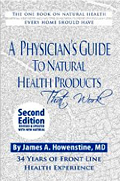VINPOCETINE BOOSTS BLOOD FLOW TO YOUR BRAIN
By
Byron J. Richards, CCN
October 19, 2013
NewsWithViews.com
Vinpocetine,
derived from the periwinkle plant, is well-regarded as a superior memory-boosting
compound. A primary mechanism of its operation is to  increase
the flow of blood throughout the brain, along with protecting nerves
from injury. Not surprisingly, vinpocetine is now being studied and
used around the world for its role in assisting those with cerebrovascular
disease.
increase
the flow of blood throughout the brain, along with protecting nerves
from injury. Not surprisingly, vinpocetine is now being studied and
used around the world for its role in assisting those with cerebrovascular
disease.
Cerebrovascular disease is defined by cognitive problems associated with a lack of oxygen- and nutrient-carrying blood to the brain. It is the second leading cause of cognitive dysfunction behind Alzheimer’s. Noticeable problems often begin in middle age and continue to advance during aging.
There are varying levels of cerebrovascular disease. In some cases the narrowing of blood vessels is reducing the amount of blood to various brain regions, meaning that the brain is basically malnourished. In some cases there are mini-strokes, wherein a small blood vessel is blocked by a clot or ruptures. A person may not specifically feel such an event. And of course, a larger stroke involving more of the brain is quite problematic.
Basic risk factors include high blood pressure, diabetes, elevated cholesterol, smoking and excess alcohol consumption.
Initial problems are likely to correspond to a lack of fitness. Aerobic exercise helps improve blood flow, including blood flow to your head. Strength training helps improve general muscle fitness and your muscles contribute significantly to pumping blood to your head.
By seeing how long you can hold your breath without significant strain you can get an idea of your oxygen reserves in cells, which is predictive of circulation and blood flow to your brain. 60 seconds or longer represents good health. 20 seconds or less represents poor health.
When circulation problems within the brain persist over time then various symptoms in addition to cognitive issues, mood issues, and fitness issues tend to develop. These may include headaches, ringing in the ears, balance problems, dizziness, adverse changes in eyesight, abnormal muscle weakness, blanking out, or a sudden drop in cognitive skills. The mind feels slow and sluggish.
Vinpocetine reduces tension in blood vessels by several mechanisms; acting directly on the structure of blood vessels themselves or by inhibiting the sodium and/or calcium electrical charges that promote tension. It reduces the core inflammatory gene signal (NF-kappaB ) in blood vessels, another mechanism or relieving tension. It demonstrates antioxidant protection as well. It boosts neurotransmitters involved with drive and memory, such as dopamine, nor-adrenaline, and acetylcholine. Interestingly, it increases brain metabolism by enhancing glucose uptake in brain cells leading to consequent energy production. It is fascinating that it actually helps the brain go faster while simultaneously helping the brain’s vascular system relax and flow better.
Numerous animal studies have proven that vinpocetine enhances blood flow to the brain, improves brain metabolism, improves cognitive decline and dementia, helps convulsions, offsets brain aging, and reduces the formation of Alzheimer’s plaques.
Numerous small human trials using doses from 10 mg – 60 mg per day have generally shown vinpocetine to be of help in these same categories with no toxicity or adverse side effects. Larger studies would be nice, but there are no Big Pharma dollars to be made. A recent review of the animal and human studies can be read in full by clicking here.
In a new study, U.S. researchers demonstrated that vinpocetine inhibits damaged LDL cholesterol from forming plaque in the arteries. They concluded, “Given the excellent safety profile of vinpocetine, this study suggests vinpocetine may be a therapeutic candidate for treating atherosclerosis.”
| Subscribe to the NewsWithViews Daily News Alerts! |
Vinpocetine is widely used in Japan, Hungary, Germany, Poland and Russia for the treatment of cerebrovascular-related pathologies. The human studies indicate that it works best when problems are not too advanced. This is because nutrition works with existing situations to help guide their improvement. It is like wrinkled skin – it is best to start working on the issue before it gets too far along.
Vinpocetine is an excellent option you can use with other brain support nutrition, a good diet, consistent exercise, adequate sleep, learning new things, and other lifestyle skills to help keep your brain in tip-top working condition. By enhancing circulation to your brain, your brain will be better oxygenated and nourished – including enhanced transport of the other nutrients you take to your brain.
� 2013 Wellness Resources, Inc. - All Rights Reserved















 Share
This Article
Share
This Article








